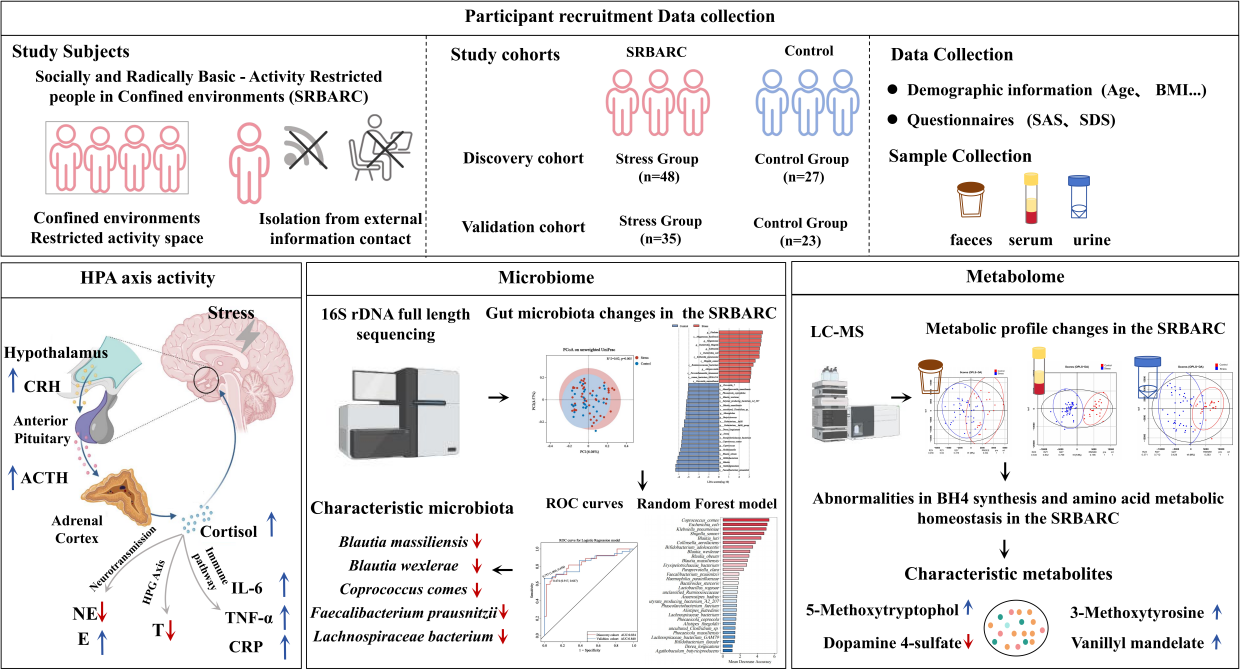文章信息 | Identification of Characteristic Microbes and Metabolites in Confined Environments Population, Brain Behavior and Immunity, 2025. | 作者 | Xiangru Feng, Jiaqian Zhong, Jiaming Wang, Xiaoxuan Lu, Yijia Chen, Yanying Yao, Xiaoguo Ji , Mengyao Zhao, Jiayang Jin*, Juan Li*, Liming Zhao * | 摘要 | Chronic stress in confined environments can disrupt the microbiota-gut-brain axis.However, the characteristic microbial and metabolic alterations in socially and radicallybasicactivity-restricted people in confined environments (SRBARC) remain unclear.This study integrated assessments of emotional states, gut microbiota, andmetabolomic profiles to investigate their interrelationships in SRBARC, aiming toidentify characteristic microbes and metabolites. The results suggested that theSRBARC tend to exhibit depressive/anxiety-like behaviors, accompanied byhypothalamic-pituitary-adrenal (HPA) axis activation, suppressed testosterone, andelevated pro-inflammatory cytokines. Full-length 16S rDNA sequencing analysisindicated lower Shannon and Chao1 indices in the gut microbiota of the SRBARC. Random forest analysis combined with dual-cohort verification suggested that Blautiamassiliensis, Blautia wexlerae, Coprococcus comes, Faecalibacterium prausnitzii, andLachnospiraceae bacterium may serve as characteristic microbes with diagnostic value(discovery cohort AUC=0.836, validation cohort AUC=0.840). Metabolomic analysis offeces, serum and urine revealed alterations in amino acid metabolismand disruptions in tetrahydrobiopterin (BH4) synthesis in the SRBARC, which affectedserotonin(5-HT) and dopamine (DA) pathways. Four metabolites, including 5-methoxytryptophol, were identified as potentially metabolites associated with emotionalstates. These characteristic microorganisms and metabolic features were associatedwith neuroinflammation and immunity, and their interactions may play a key role inregulating emotional states in SRBARC. In summary, this study suggested a potentialinterplay among gut microbiota, neurotransmitter metabolism, and emotional states inthe SRBARC, identifying potential key microbial signatures and metabolites that mayprovide a theoretical foundation for developing gut microbiota-based interventio strategies. | 摘要图 | 
| 文章主页 |
|
|